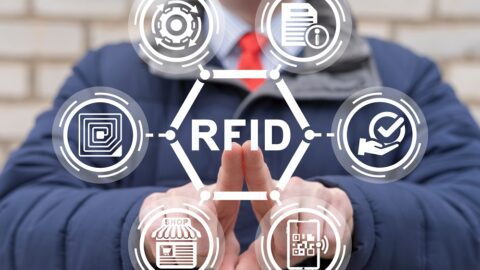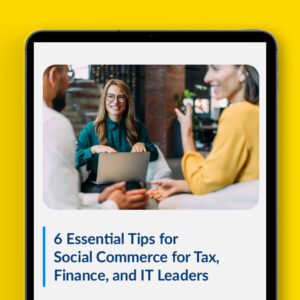Top executives from retailers including City Gear, Aldo, Under Armour and GNC, along with industry experts from BRP Consulting, Retail Prophet Capgemini and HRC Advisory Services, shared their insights into how retailers can reinvent themselves to provide frictionless experiences in any channel consumers choose. The numerous hot-button topic areas covered during the webinar sessions included the last mile, BOPIS, experiential retail, leveraging location data and empowering front-line employees.
Following are brief recaps of the 2019 Connected Consumer Series webinars, which are now available on demand.
Take BOPIS Risks Into Account To Maximize Its Rewards
BOPIS has proven popular with both retailers and consumers, but it carries risks around inventory levels and customer satisfaction that can nullify its benefits. When shoppers buy or reserve an item online and then find it’s not available when they visit the store, they are far more disappointed than they would be in a typical out-of-stock situation, according to Kevin Stadler, CEO of 4R Systems.
This creates a higher risk factor for BOPIS fulfillment, and “when retailers use legacy supply chain systems with BOPIS, it creates a ‘bullwhip effect’ of both underreaction and overreaction that can actually increase both the retailer’s risk and their supply chain costs,” said Stadler.
In the session, titled: Delivering On The Promise Of BOPIS…And Other Omnichannel Realities, Antony Karabus, CEO of HRC Advisory Services, revealed results of a survey of retail executives that indicated the extent of the problem: “80% are not effectively allocating inventory to store-level local demand; only 14% were using predictive analytics, and most were struggling to integrate BOPIS into operational practices,” he said.
By incorporating the different risk factors for BOPIS and traditional in-store sales into their supply chain calculations, retailers can maximize their BOPIS benefits. “They can keep more inventory at a smaller number of central locations, e.g. warehouses, until demand materializes,” said Stadler. “Additionally, they can fulfill ‘surgically’ in the store with certainty, instead of fragmenting across their brick-and-mortar stores in anticipation of uncertain demand.”
The Associate Of The Future: Just One Facet Of A Media Brand
Doug Stephens, Founder and President of Retail Prophet, doesn’t care for the term omnichannel: he considers it “a shrugging of the shoulders” that dumbs down the complex changes transforming the industry. Instead, he posited that retail is at the start of an entirely new age during the session, titled: The Store Is Media: Reengineering Frontline Teams For The New Age Of Retail, sponsored by Axonify.
“When you think about it, from the mid-1800s and the grand department stores of Europe, all the way to the outlet malls of Fort Lauderdale, Fla., not much has really changed in retail,” said Stephens. “Fundamentally, we still plan, build, manage and even measure retail stores the same way we did in the midst of the industrial revolution, and I think that simply cannot be the case going forward.”
The stores of the past existed for three primary reasons: merchandising products, offering product information and facilitating purchases. The store of the future will become just one piece in a media empire that spans channels. Rather than be relegated to inventory managers, checkout clerks and return processors, empowered associates will become brand storytellers, expert demonstrators and goodwill ambassadors, through the use of technology.
Marketplaces Dominating The Modern Omnichannel Experience
As the growing convenience of omnichannel options causes consumer expectations to rise, marketplaces are becoming a useful component for retail success, according to Link Walls, VP of Digital Marketing Strategy at ChannelAdvisor in the session, titled: Leveraging Omnichannel Trends For E-Commerce Marketplace Success. Large platforms like Google Shopping or Amazon offer a more convenient experience than most retailers can manage alone.
“We’re really entering what we call the second era of omnichannel,” said Walls. “This is less about making things equal and reflecting transparency, and more about a convergence of channels in ways that really benefit the consumer.”
“Omnichannel 2.0” is all about removing friction and creating the ultimate customer experience, and marketplaces are at the heart of this trend. Some of the advantages retailers can access by participating in a marketplace include:
- Penetration: 35% of 18- to 34-year-olds said they “can’t go without” the Amazon app;
- Universal checkout: Shoppers can make purchases from a wide range of retailers in a single transaction, reducing friction;
- Fast delivery: Using a third-party delivery service, such as the ones available through certain marketplaces, retailers can greatly reduce delivery time frames.
Proactive Last Mile Management Promotes Strong Customer Retention
Of the 13.2 billion shipments occurring annually in North America, 11.5% experience some sort of exception, ranging from simple delays to damaged packages, according to Convey. The sheer volume of last mile challenges justify retailers’ attention, but the benefits of crafting a post-purchase experience that minimizes stress and maximizes convenience go well beyond just damage control.
“It’s a chance to make an investment in a sustained relationship with a customer,” said Jeffrey Neville, SVP and Practice Lead at BRP Consulting. Speaking at the session, titled: Learn How Top Retailers Are Winning The Last Mile With Delivery Experience Management, Neville added that “when the last mile experience is done right, the lifetime value of the customer improves dramatically: they are 80% more likely to be repeat customers, they spend up to 15% more and they are easier to convert.”
Kirsten Newbold-Knipp, VP and CMO at Convey, gave the example of Grove Collaborative, an eco-friendly cleaning products company that uses Convey’s Delivery Experience Management solution to proactively identify and address exceptions for its hundreds of thousands of monthly shipments. “They experienced a 9.4% NPS improvement, and saved $63 per damage claim and $23 per incorrect address,” said Newbold-Knipp. Additionally, because the retailer’s customer care agents were able to deal with shipping problems more quickly, they could spend more time being “Grove Guides” who help customers decide what products to purchase, resulting in a 2X increase in average order value (AOV).
How Machine Learning Beefs Up Location Data Benefits
Advances in computing power combined with machine learning-enhanced tools are supercharging the benefits of location data. “There’s much greater accessibility of machine learning, in part because the toolkits to perform these analyses have grown dramatically more user-friendly,” said Joel McCune, Solution Engineer at Esri. “With the associated availability of powerful computing — what’s available on a laptop plus from cloud services is equivalent to what you would get from a supercomputer 10 years ago.”
Some of the things retailers can accomplish with these machine learning-enhanced tools was the topic of the session, titled: How Retailers Can Put Location Data On Steroids With Machine Learning. McCune and Gary Sankary, Industry Marketing Strategy-Retail at Esri, took webinar attendees through a step-by-step examination of whether the coffee shop-heavy Portland, Ore. market could support additional units of a small regional coffee chain. More than 1,500 demographic variables were combined with 20 different metrics describing geography, with calculations including the driving, walking and (because it’s Portland) cycling time to each shop in the chain.
“We were able to quantify the impact of the proposed new store to the business, including new customers and incremental sales growth, as well as our impact on the competition and competition’s impact on us,” said Sankary. “This kind of detailed analysis is compelling to retailers trying to grow in saturated markets.”
By determining that there was still headroom for growth in the Portland market, “rather than having to venture into a new market and set up a supply chain there, the retailer could densify in an existing market,” said McCune. “They could expand without dramatically increasing the complexity of their business.”
Aldo, GNC And Under Armour Turn To Digital Receipts To Drive Customer Loyalty
While retailers strive to retain customers, they often fail to personalize transactional communications well enough to create a compelling post-sale experience for shoppers. In this session, titled: How GNC, Under Armour & Aldo Leverage Personalization To Reshape The Post-Sale Experience, three retail executives shared how they leveraged digital receipts from FlexEngage to address post-purchase challenges .
The panelists included:
- Sandra Martineau, Director of Loyalty and CRM at ALDO;
- Jennifer Biefel, Director of Customer Marketing and Loyalty at GNC;
- Brent Ott, Senior Manager of Athlete and Teammate Experience at Under Armour; and
- Tomas Diaz, CEO and Co-Founder at FlexEngage.
The three retailers saw major improvements across the board, including:
- Aldo increased email capture rates fro 20% to 60%;
- GNC saw a 10X lift from its target paid loyalty program upsell; and
- Under Armour shored up brand consistency with a branded receipt delivered to a shopper’s mobile phone in less than 60 seconds.
“We saw 3 million new emails within 12 months of rolling out the program,” Martineau said. The digital receipts “maintain the conversation a little bit longer,” she added. “We have been able to serve content for upcoming collections that we wouldn’t have been able to do before. Now, through this particular e-receipt, we’re getting the ability to talk to an audience that wouldn’t necessarily be paying attention to our daily promotional emails.”
Fireside Chat With City Gear: E-Commerce Late Bloomer Becomes Omnichannel Success Story
City Gear, a footwear and apparel retailer with more than 130 U.S. stores, is a late bloomer within the e-Commerce space — launching its e-Commerce site in 2008 before relaunching with Magento in 2014, and building a mobile app with Shopgate in 2017.
In a fireside chat during the webinar, titled: Bridging The Gap Between Offline And Online: City Gear Steps Into Digital Commerce, Chris Brigham, Director of Omnichannel at City Gear, noted that the company decided to relaunch the e-Commerce site based on a need for impeccable order management that aligned with the company’s graphic-heavy design, along with the ability to post blog and video content. Additionally, the site was built to be more reactive for mobile shoppers and enabled the retailer to integrate its social media feeds.
“On our own Instagram feeds, we were constantly getting good content from — and engagement with — the local store level,” Brigham said during the webinar. “We were able to pull that feed and present it in a nice, visual way on the home page that helped tell the story, ultimately leading to engagement and conversion on the web site.”
Casey Gannon, VP of Marketing at Shopgate, and Travis Eiland, Head of Commerce Strategy and Growth at Magento, both shared insights with Brigham on the panel.
Improve Experiences Using Employee And Consumer Insights
Customer feedback is a critical ingredient for retailers striving to create differentiated brand experiences. However, best-in-class retailers recognize that the voice of the employee can be just as important.
During the session, titled: Building Customer Success With Enhanced Employee Engagement, Medallia executives shared real-world examples of retailers that successfully linked their Voice of the Customer (VoC) and Voice of the Employee (VoE) programs to enhance employee engagement and performance. Russ Haswell, VP and Solution Principal, and Erica James, Senior Manager of Professional Services, zeroed in on three key trends driving the convergence of customer experience and employee experience:
• Experience is the new product;
• The expectation bar is being raised; and
• Engaged employees are driving business growth.
“Successful retailers that have a strong presence in brick-and-mortar are changing from selling products to selling experiences,” Haswell said. Whether in the form of events, pop-ups or in-store consultations and assisted selling, these experiences are “making a value-added connection with consumers.”
Moreover, when retailers successfully empower employees, they become more engaged and immersed in the selling experience, ultimately impacting customer experiences. For instance, one provider of nutritional goods for pets ran a test program where select employees went through extensive training. They monitored employee engagement during and after the training, and tapped VoC feedback to determine whether these empowered employees actually impacted customer experiences. Once the retailer identified a connection between the two, the program was rolled out to more stores.
How ERP Platforms Support 5 Major Retail Processes
Retailers can sometimes get so carried away by the newest, flashiest technologies to optimize the omnichannel retail experience that they often overlook the basics. In this session, titled: The Secret Role Of ERP In The Retail Innovation Era, Chris Benner, Senior Industry Principal of Retail at Oracle NetSuite, and John Kenwood, VP and North America leader at Capgemini, discussed the modern role of ERP platforms as a building block for agile retail operations in 2019.
ERP systems support five key business processes that drive innovation:
- Item management flexibililty;
- Managing operations and logistics;
- Customer data;
- Sales channels; and
- Inventory visibility.
“If we’ve got disparate systems and bad data, and we’ve got systems that can’t really talk in real time — if we’re not processing orders quickly enough and we have errors happening in our systems, the bottom line is we’re going to have a bad customer experience,” Benner said. “The last thing that we need in this environment today is to have customers trying to interact and shop with us and have a bad experience, whether it’s an e-Commerce web site that’s not connected to the store system or it’s not connected to the back end.”
Exceed Store Performance Objectives With Events And Classes
It is an unsettling time for retailers with brick-and-mortar stores: 59% of store operators said traffic was flat or down in 2018, according to the CSP 2018 Outlook. Coresight Research also revealed that in the first few weeks of 2019, more than 2,000 store closures were announced.
So what is the key to driving in-store traffic, engagement and conversions? Experiential retail.
In the session, titled: Experiential Retail: New Data Reveals The Opportunities (And Challenges) Of This Growing Trend, Lauren Mead, CMO of TimeTrade, revealed new survey results that reaffirm the growing role of events and classes in the experiential era. She also discussed how brands like Best Buy, Nordstrom and Sephora are successfully integrating events and classes into their engagement strategies.
A whopping 78% of executives who participated in the survey said they have held in-store events and classes in the past — with the majority saying they invested in these activities in order to acquire new customers and build brand awareness and store foot traffic. Although Mead acknowledged that it’s still early days for the trend, retailers are meeting their objectives.
“The experiential programs are having a broad impact across the business and they’re seeing results that align with their key goals,” Mead noted. Half of respondents said they saw improved brand awareness and sentiment; 48% said they saw improved store traffic and return visits; and 45% saw increased sales for products demonstrated during these events.
Check out all the #CCS19 sessions here.
·













